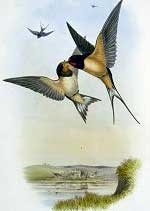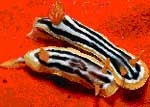 The Willow Ptarmigan, scientifically known as Lagopus mutus, is a forest bird that typically inhabits trees and shrubs in high mountainous areas.
The Willow Ptarmigan, scientifically known as Lagopus mutus, is a forest bird that typically inhabits trees and shrubs in high mountainous areas.
As chicks, they consume both insects and invertebrates, but as adults, Willow Ptarmigans L.mutus switch to a vegetarian diet, primarily feasting on seeds and buds.
This unique bird species has feathered legs and toes, which are particularly useful for walking on soft snow without sinking. Female Willow Ptarmigans are slightly smaller than males.
The most remarkable characteristic of the L.mutus is its plumage, which changes color three times a year: during winter, summer, and autumn. This adaptation allows them to effectively camouflage in their environment.
 |
|
Female Willow Ptarmigan (left) and male Willow Ptarmigan (right) in summer |
As winter arrives, both male and female ptarmigans become completely white, except for a black tail. Their feathers reach their whitest state in January and February, the coldest months of the year when heavy snowfall is common. In summer, the female’s plumage turns brown, while the male’s plumage is gray; both have white wings and bellies. This coloration blends seamlessly with the summer forest landscape.
Male ptarmigans possess a red patch of skin above their eyes, usually concealed by feathers, but during the breeding season, they display this feature prominently to attract females.
The courtship display of male ptarmigans is quite fascinating: they fly around the female, lower one wing to the ground, spread their tail, and simultaneously reveal the red skin above their eyes.
The Willow Ptarmigan L.mutus is a non-migratory bird, belonging to one of the few species capable of surviving the harsh winter conditions. During winter, males and females live separately: some groups are composed entirely of males, while others consist solely of females. These groups disband at the onset of spring, at which point males select territories and defend their expansive domains. Aerial chases often occur when intruders invade their territory.
 Nests of this bird species are typically built on the ground or occasionally among rocks or shrubs. The nest is lined with grass or feathers. Each year, the female lays only one clutch, consisting of 3 to 12 eggs. The female is solely responsible for incubating the eggs, which hatch after 24 to 26 days of incubation.
Nests of this bird species are typically built on the ground or occasionally among rocks or shrubs. The nest is lined with grass or feathers. Each year, the female lays only one clutch, consisting of 3 to 12 eggs. The female is solely responsible for incubating the eggs, which hatch after 24 to 26 days of incubation.
Chicks are capable of leaving the nest shortly after hatching. The mother keeps a watchful eye on them, but the chicks are independent in finding food. Willow Ptarmigan chicks grow rapidly and can fly within just 10 days.
This species, L.mutus, typically measures about 35 cm in length and weighs approximately 510 grams, and can be found across Europe, Asia, and North America.





















































